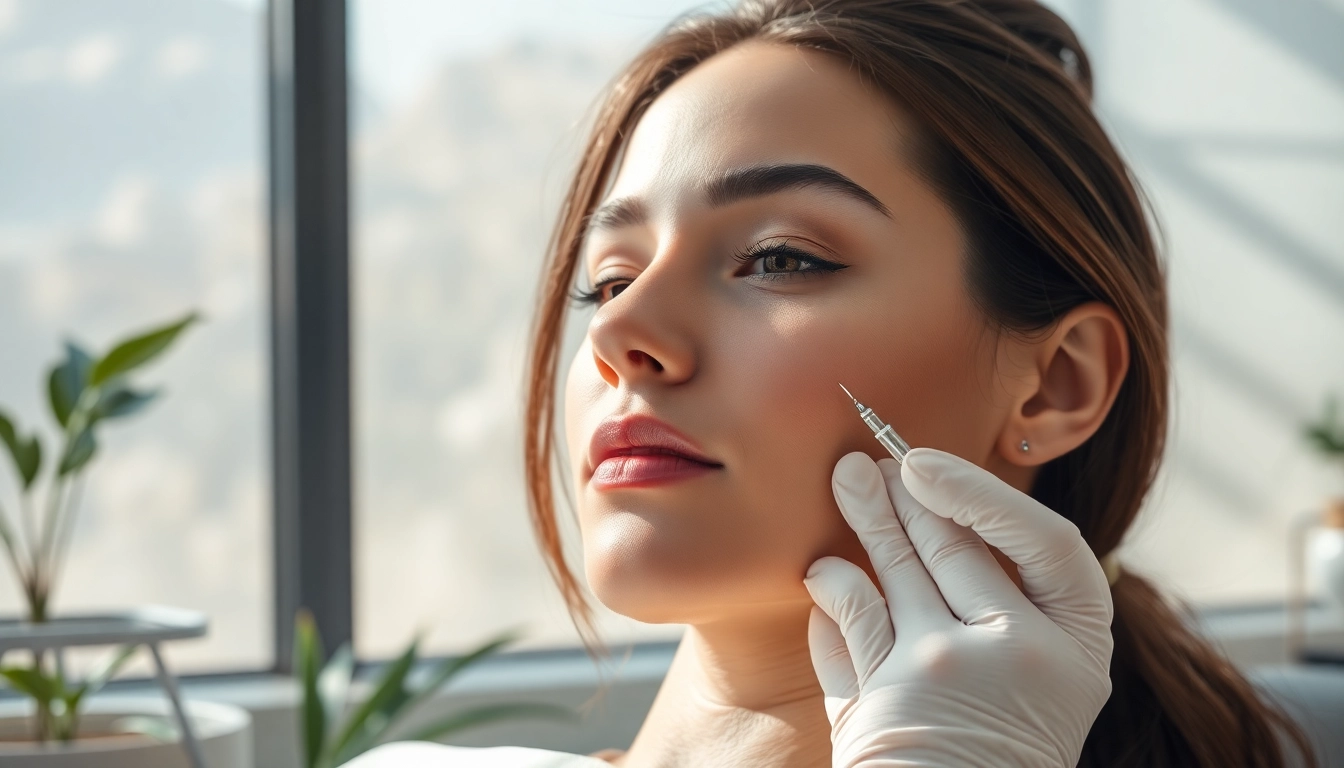The Foundation of Aesthetics
What are Aesthetics?
Aesthetics is a branch of philosophy that deals with the nature of beauty, art, and taste, as well as the creation and appreciation of beauty. In the field of personal care and health, aesthetics refers to treatments aimed at enhancing an individual’s physical appearance. These treatments are intended not only to address cosmetic concerns but also to boost self-confidence and improve overall wellbeing. As society increasingly embraces the significance of self-improvement, the aesthetics industry continues to proliferate, offering a wide range of options for individuals seeking to enhance their appearance.
Importance of Aesthetics in Modern Care
The growing emphasis on aesthetics in modern care reflects a fundamental shift in societal values. Individuals are more inclined to focus on their outer appearance, using aesthetic treatments to express individuality and enhance their self-image. This paradigm shift emphasizes that aesthetics is not merely about vanity; it’s about cultivating self-esteem and improving mental health. Research indicates that when individuals feel good about their appearance, their confidence improves, leading to enhanced social interactions, career opportunities, and overall quality of life. Consequently, the aesthetics industry has begun to integrate holistic approaches, recognizing the connection between physical appearance and emotional wellbeing.
Key Trends in Aesthetics
Key trends in the aesthetics field are constantly evolving, driven by advancements in technology, consumer preferences, and cultural shifts. Some noteworthy trends include:
- Minimally Invasive Procedures: There is a growing preference for non-surgical treatments such as injectables and laser therapies, which offer results with minimal downtime.
- Sustainable Beauty: Consumers are increasingly valuing eco-friendly and sustainable beauty products and practices, leading to a demand for brands that meet these criteria.
- Personalization: Tailored aesthetic treatments that cater to individual needs and preferences are gaining popularity.
- Wellness Integration: Aesthetic treatments are being combined with wellness practices, emphasizing a holistic approach to beauty.
Understanding Aesthetic Treatments
Types of Aesthetic Treatments Available
Aesthetic treatments encompass a wide range of procedures aimed at improving physical appearance. These can generally be categorized into non-invasive, minimally invasive, and surgical treatments:
- Non-Invasive Treatments: These are procedures that do not require penetration of the skin. Examples include facials, chemical peels, and microdermabrasion.
- Minimally Invasive Treatments: These are procedures that may involve needles but do not require significant recovery time. Common examples are Botox injections, dermal fillers, and laser treatments.
- Surgical Treatments: These are more invasive procedures that typically require anesthesia and a longer recovery time, such as facelifts and breast augmentations.
Common Procedures in Aesthetics
Some of the most common procedures in the aesthetics industry include:
- Botulinum Toxin Injections (Botox): A method to temporarily paralyze muscles to reduce the appearance of fine lines and wrinkles.
- Dermal Fillers: Injectable substances that restore lost volume, smoothen contours, and reduce facial wrinkles.
- Laser Hair Removal: A treatment designed to remove unwanted hair using laser technology.
- Chemical Peels: A technique that utilizes chemical solutions to improve skin texture and appearance.
- Microdermabrasion: A procedure that exfoliates the skin to enhance its texture and appearance.
Who Can Benefit from Aesthetic Treatments?
Aesthetic treatments can benefit individuals across different age groups and backgrounds. While younger people may seek treatments for preventive purposes or to enhance their features, older individuals may look for solutions to reduce signs of aging. Those with specific skin concerns, such as acne, scarring, or hyperpigmentation, may also find aesthetic treatments advantageous. Importantly, anyone looking to boost their self-esteem or enhance their physical appearance can consider aesthetic options as part of their self-improvement journey.
Choosing the Right Aesthetic Practitioner
Qualifications to Look For in Aesthetics
When seeking an aesthetic practitioner, it is crucial to ensure they hold appropriate qualifications. Look for certifications from recognized medical boards or associations specific to aesthetics and cosmetic procedures. Additionally, a reputable practitioner should possess a background in dermatology, plastic surgery, or a related healthcare field. Experience is also vital; practitioners who have performed numerous procedures are often more skilled and confident in their methods.
Questions to Ask During Consultations
Before committing to any aesthetic procedure, consultations play a critical role. It’s essential to ask the following questions:
- What are your credentials and experience in performing this specific treatment?
- Can you provide before-and-after photos of previous patients?
- What are the potential risks and complications associated with this procedure?
- What can I expect during the recovery process?
- How will we tailor the treatment to my unique needs?
How to Assess Practitioner Experience in Aesthetics
Evaluating a practitioner’s experience is critical for ensuring a successful treatment. Aside from checking credentials and reviews, consider the following:
- Ask about the number of similar procedures the practitioner has performed in the past year.
- Inquire if they have continued education or training in aesthetics and if they stay updated on the latest trends and technologies.
- Request references from former patients to gain insight into their experiences.
Preparing for Your Aesthetic Treatment
What to Expect Before the Procedure?
Preparation for an aesthetic treatment varies based on the procedure type but generally includes the following steps:
- Consultation: Detailed discussions about your medical history and aesthetic goals.
- Pre-Treatment Instructions: Expectations for skincare regimes, medication adjustments, and diet considerations.
- Follow-Up Planning: Organizing post-treatment check-ins to monitor healing and results.
Post-Treatment Care Tips
Post-procedural care is vital for optimal healing and outcomes. Key post-treatment care tips include:
- Avoid excessive sun exposure and use sunscreen diligently.
- Keep the treated area clean and hydrated, following any specific instructions provided by the practitioner.
- Avoid strenuous activities and gym for a specified time, depending on the procedure.
- Report any unusual symptoms or side effects to your practitioner immediately.
Common Myths about Aesthetic Treatments
Many misconceptions surround aesthetic treatments, leading to misunderstandings about their safety and effectiveness. Common myths include:
- All aesthetic treatments are painful: Many procedures are minimally invasive, and practitioners often use numbing agents to alleviate discomfort.
- Aesthetic treatments are only for the wealthy: With a variety of options available, there is something within most budgets.
- Results are permanent: While some treatments offer long-lasting effects, others need maintenance and repeat sessions.
- Aesthetic procedures are only for women: Men also increasingly seek aesthetic treatments for various reasons.
Future of Aesthetic Treatments
Innovations Shaping Aesthetics
The aesthetics industry is continuously evolving, with innovations enhancing treatment efficacy, safety, and patient satisfaction. Examples of innovations include:
- RF (Radio Frequency) Microneedling: A combination of microneedling and radiofrequency energy for improved skin tightening and rejuvenation.
- 3D Imaging Technology: Advances in imaging allow practitioners to create a visual representation of expected results, helping clients make informed decisions.
- AI in Aesthetics: Artificial intelligence is being utilized to analyze skin conditions and tailor individualized treatment plans.
The Role of Technology in Aesthetics
Technology plays a critical role in aesthetics, facilitating safer procedures with fewer side effects and faster recovery. Advancements include improved laser technologies, automated devices for precise technique, and telemedicine platforms that allow for virtual consultations. These tools enrich patient experience, enhance effectiveness, and push the boundaries of what’s possible in aesthetic treatments.
Potential Trends to Watch in Aesthetics
As we look to the future, several trends are poised to influence the aesthetics landscape:
- Holistic Approaches: An emphasis on integrating mental health and wellness with aesthetic practices.
- Personalized Aesthetic Experiences: Customization based on genetic, lifestyle, and personal preferences.
- Increased Accessibility: Better health insurance coverage for aesthetic procedures might broaden the demographics able to access these treatments.
- Regenerative Medicine: Advancements in this field may lead to breakthroughs in non-invasive treatments that utilize the body’s natural healing processes.



